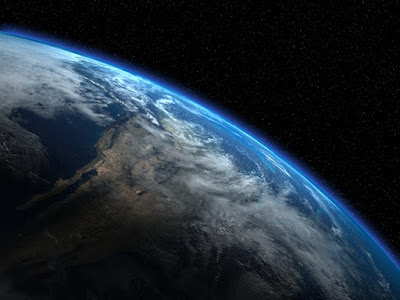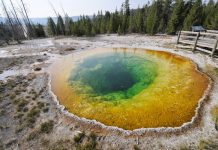
Oxygen is crucial for the existence of animals on Earth. But, an increase in oxygen did not apparently lead to the rise of the first animals. New research shows that 1.4 billion years ago there was enough oxygen for animals — and yet over 800 million years went by before the first animals appeared on Earth.
Animals evolved by about 600 million years ago, which was late in Earth’s history. The late evolution of animals, and the fact that oxygen is central for animal respiration, has led to the widely promoted idea that animal evolution corresponded with a late a rise in atmospheric oxygen concentrations.
“But sufficient oxygen in itself does not seem to be enough for animals to rise. This is indicated by our studies,” say postdoc Emma Hammarlund and Professor Don Canfield, Nordic Center for Earth Evolution, University of Southern Denmark.
Together with colleagues from the China National Petroleum Corporation and the University of Copenhagen, Hammarlund and Canfield have analyzed sediment samples from the Xiamaling Formation in China. Their analyses reveal that a deep ocean 1.4 billion years ago contained at least 4% of modern oxygen concentrations.
The new study is published in the journal Proceedings of National Academy of Sciences.
Usually it is very difficult to precisely determine past oxygen concentrations. The new study, however, combines several approaches to break new ground in understanding oxygen concentrations 1.4 billion years ago.
The study uses trace metal distributions to show that the bottom waters where the Xiamaling Formation sediments deposited contain oxygen. The distribution of biomarkers, molecules derived from ancient organisms, demonstrate that waters of intermediate depth contain no oxygen. Therefore, the Xiamaling Formation deposited in an ancient oxygen-minimum zone, similar to (but also different) from those found off the present coasts of Chile and Peru.
With this backdrop, the researchers used a simple ocean model to estimate the minimum concentrations to atmospheric oxygen required to reproduce the distribution of water-column oxygen in the Xiamaling Formation.
“The water column had an oxygen concentration at least 4 % of present atmospheric levels (PAL). That should be sufficient for animals to exist and evolve,” says Canfield.
“Having determined the lowest concentration of oxygen in the air almost one and a half billion years ago is unique,” says Hammarlund, adding:
“Researchers know of simple animals, such as sponges and worms, that today are capable of managing with less than 4% PAL, even much less.”
“Sponges probably resemble some of the first animals on Earth. If they manage with less than 4 % today’s oxygen levels, it is likely that the first animals could do with these concentrations or less,” says Canfield.
The results differ from other studies and raise several questions, such as: Why then did animals rise so late in Earth’s history?
“The sudden diversification of animals probably was a result of many factors. Maybe the oxygen rise had less to do with the animal revolution than we previously assumed,” says Hammarlund.
Reference:
Shuichang Zhang, Xiaomei Wang, Huajian Wang, Christian J. Bjerrum, Emma U. Hammarlund, M. Mafalda Costa, James N. Connelly, Baomin Zhang, Jin Su, Donald E. Canfield. Sufficient oxygen for animal respiration 1,400 million years ago. Proceedings of the National Academy of Sciences, 2016; 201523449 DOI: 10.1073/pnas.1523449113
Note: The above post is reprinted from materials provided by University of Southern Denmark.










